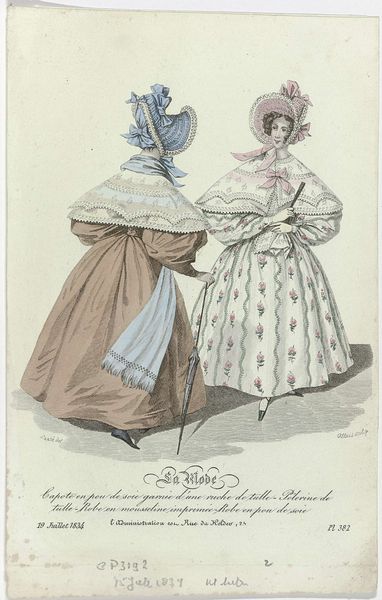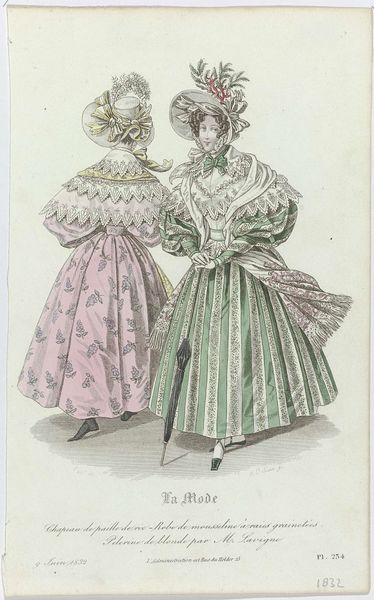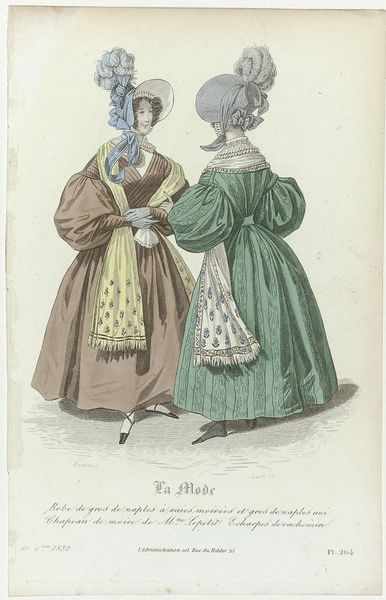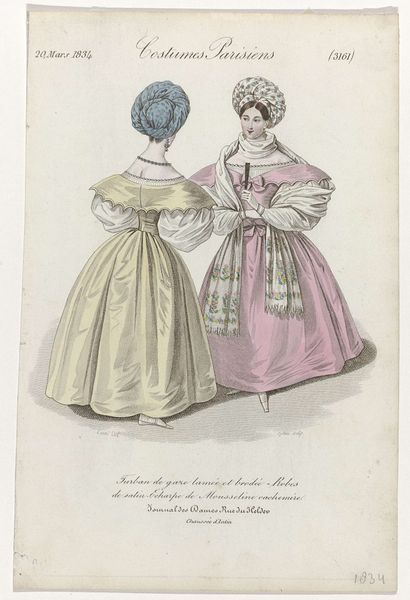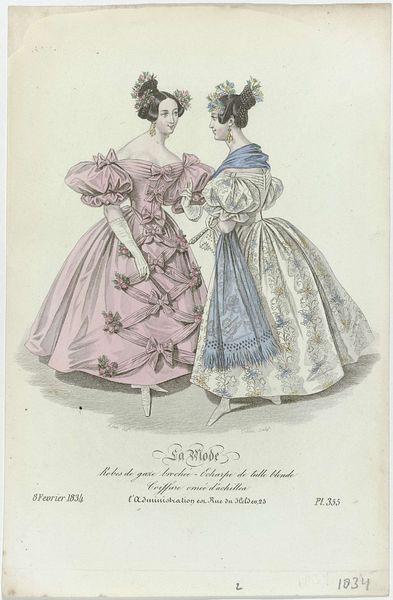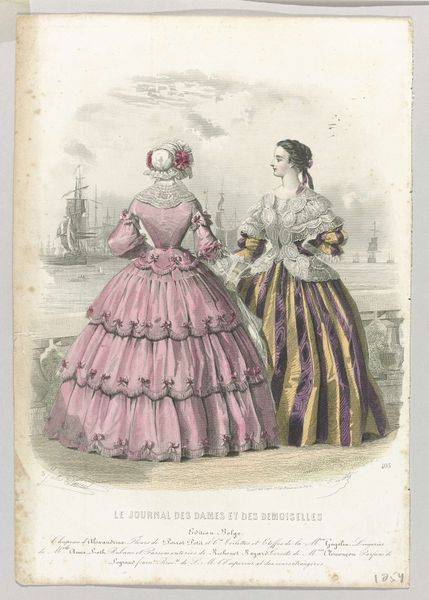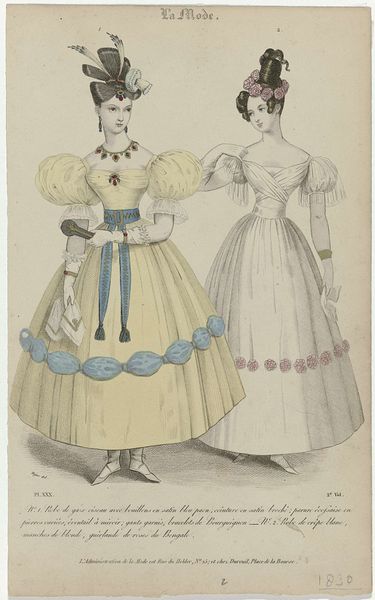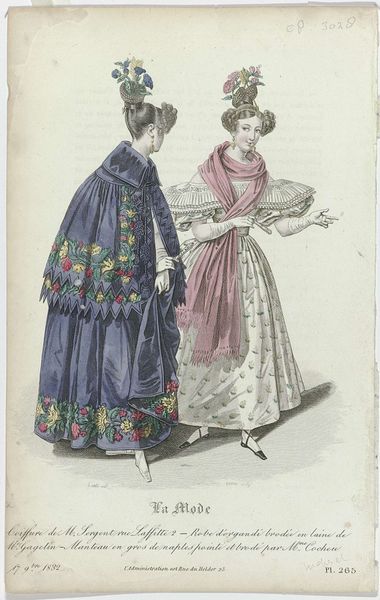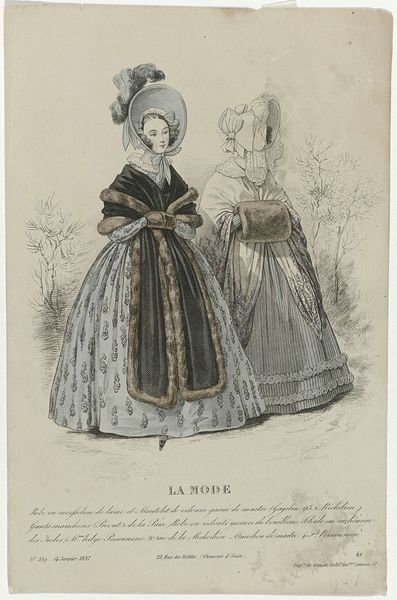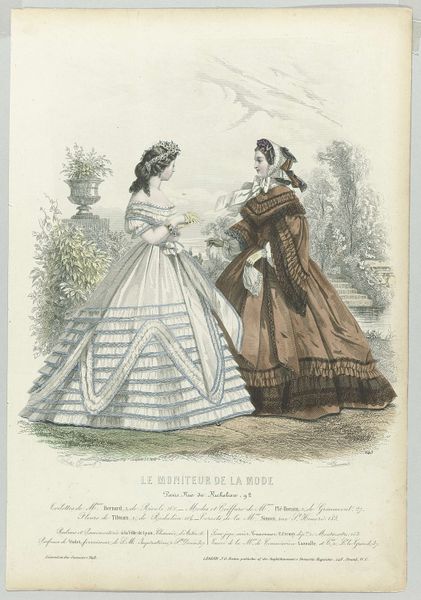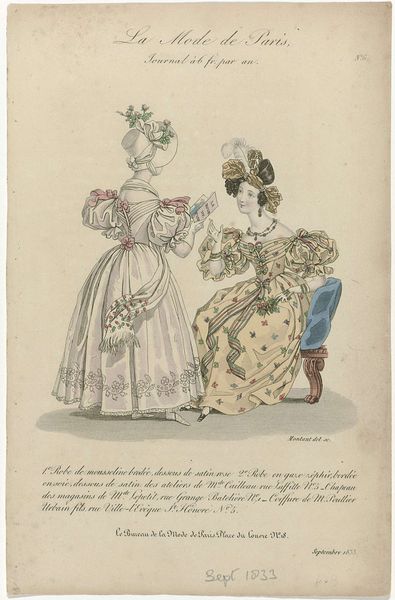
Dimensions: height 217 mm, width 140 mm
Copyright: Rijks Museum: Open Domain
This fashion plate from September 21, 1833, by an anonymous artist, showcases dresses of embroidered organdy. Organdy, a fine, translucent cotton muslin, was prized for its crispness and ability to hold intricate embroidery. Look closely, and you'll see the delicate needlework, likely executed by skilled artisans. The dresses, with their puffed sleeves and wide skirts, represent the height of early 19th-century fashion. The embroidery, seen at the hem of the dresses, and on the shawl, adds richness and texture to the relatively simple material, signifying the wearer's elevated status and taste. These textiles and the labor-intensive processes used to create them were directly tied to global trade networks and emerging industrial capitalism. Textiles like organdy relied on the labor of enslaved people producing cotton. Consider the contrast between the apparent lightness of the dresses and the heavy social realities of their production. These details are important to consider, and challenge our understanding of both art and craft.
Comments
No comments
Be the first to comment and join the conversation on the ultimate creative platform.
